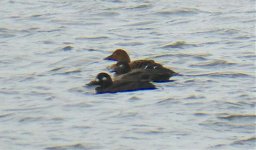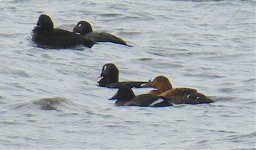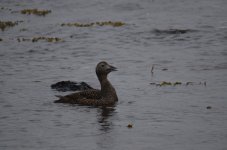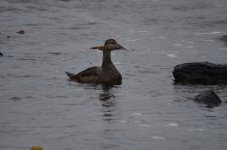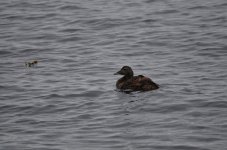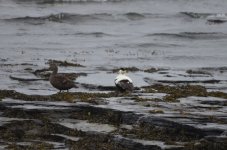Peter Audrain
Consummate Indoorsman
In late December, at the outlet of Scarborough Marsh into the ocean, at Scarborough, Maine, I saw several male and female Common Eiders among Common Loons, Common Mergansers, Long-tailed Ducks, White-winged Scoters, and Black Scoters.
All of the swimming female Common Eiders had two very prominent white bars visible toward the rear of their bodies. These bars aren't shown in my books. They correspond to the speculum visible on flying birds, but it bothered me that the bars weren't pictured or mentioned in my guides. I am also not sure whether or not I have seen the bars before on female Eiders (further north in Maine, in summer).
I'm attaching two pictures. The light was low—the equivalent of sunset at most other times of year or latitudes—and coming from the left. The white wing bars were easily the most noticeable field mark on these Eiders. In your experience, are these bars a standard-issue look for swimming female Eiders?
All of the swimming female Common Eiders had two very prominent white bars visible toward the rear of their bodies. These bars aren't shown in my books. They correspond to the speculum visible on flying birds, but it bothered me that the bars weren't pictured or mentioned in my guides. I am also not sure whether or not I have seen the bars before on female Eiders (further north in Maine, in summer).
I'm attaching two pictures. The light was low—the equivalent of sunset at most other times of year or latitudes—and coming from the left. The white wing bars were easily the most noticeable field mark on these Eiders. In your experience, are these bars a standard-issue look for swimming female Eiders?




